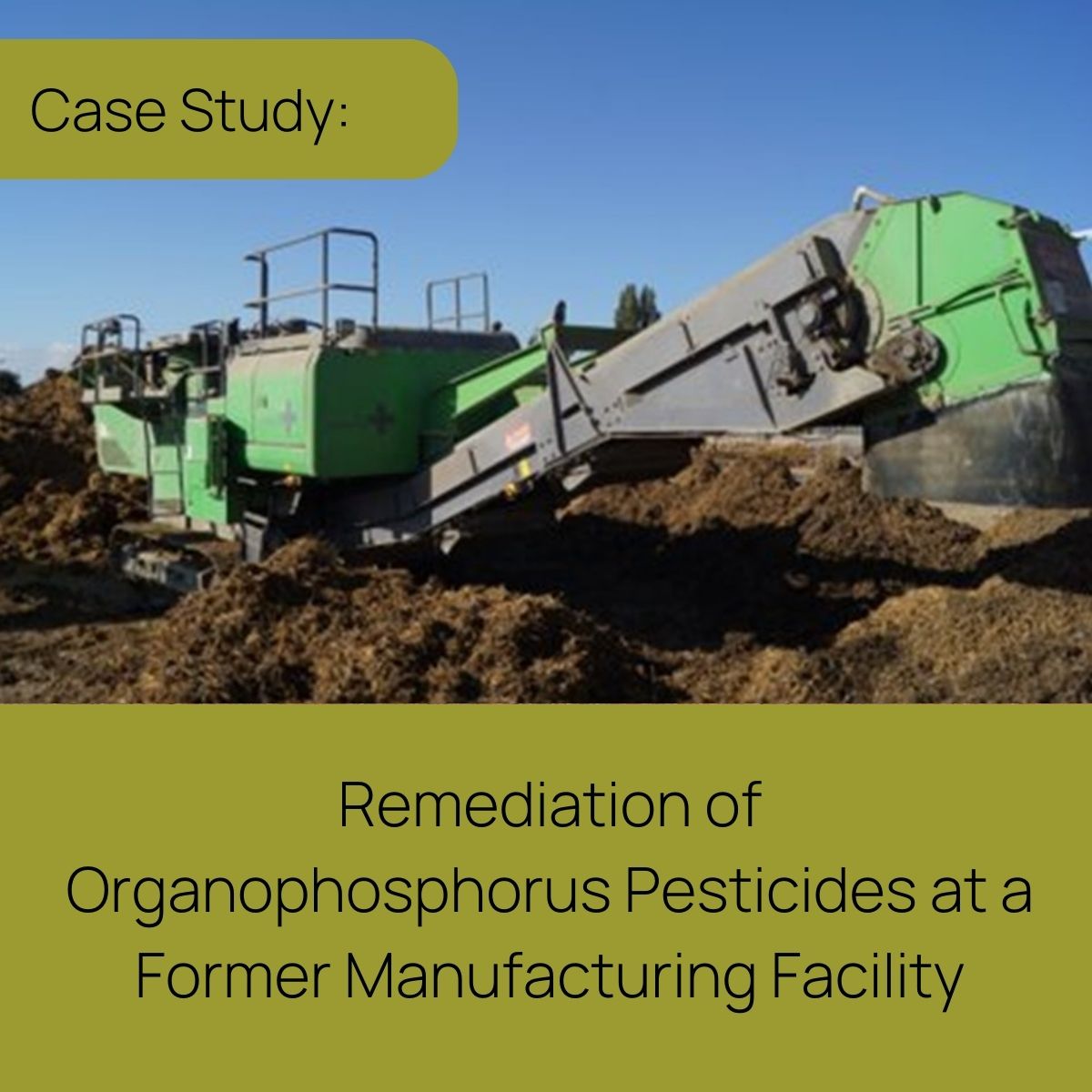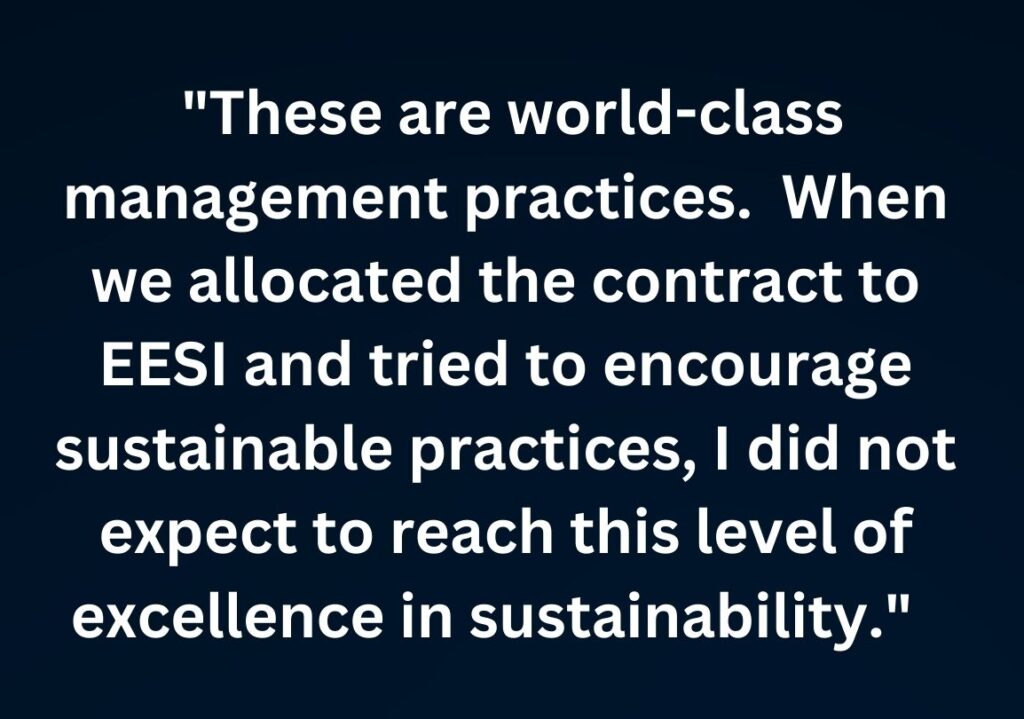Remediation of Organophosphorus Pesticides
Former Pesticide Manufacturing Facility, UK
Over the past three decades EESI have continued to develop market leading bioremediation capabilities and services. Our expertise in technology includes treating very high concentrations of compounds such as coal tars and heavy end hydrocarbons through to recalcitrant compounds such as pesticides.
Treating Organophosphate Pesticide (OPP)
In a recently completed UK project we were required to treat an organophosphate pesticide (OPP) which had impacted soil predominately comprising silty sands and clay. Technical challenges included (a) reduced bioavailability caused by the crystallisation of the main target OPP due to the attenuation of carrier solvents following its release into the environment, (b) early step formation of antimicrobial intermediate metabolites and (c) conditioning over saturated, cohesive, and organic rich soils to create an optimal soil environment for biodegradation.
Understanding the properties of the target pesticides led to a strategy based on biological soil heating combined with using EESISolv 18, a proprietary green surfactant and solvent. The aim of this approach was to increase the bioavailability of the pesticides and promote strong growth of indigenous soil bacteria capable of degrading OPPs. Furthermore, our approach also relied on conditioning soil to support fungal growth as part of the overall microbiome.

Dynamic Biopiling
To achieve these objectives, we adapted our patented Dynamic Biopiling methodology; combining the surfactant and solvent addition with a bespoke composting strategy that achieved rapid and sustained soil heating. Our target average temperature range was 37 to 44oC, 75% of biopiles reached this goal over the full active treatment period. For all biopiles, the average peak soil temperature was 42.7oC with average full lifecycle temperature (including heating, maturation and cooling phases) of 27.3oC.
Fungi Growth
The growth of fungi was visually evident, with fungal hyphae proliferating throughout treated soil. These important species, which are more resistant to contaminant toxicity, provide many functions supportive of a dynamic microbiome. The most interesting function of fungi in the context of this project was direct extracellular enzyme driven oxidation of OPP and intermediate metabolites.
OPP Reduction
To build up strong lines of evidence to confirm observed contamination reductions were resultant of biodegradation, qPCR analysis of soil samples collected from active biopiles at different stages of treatment was also undertaken. In comparison to control samples, this analysis identified elevated fungal and bacterial populations and elevated concentrations of OPP degrading bacteria.
Overall, approximately 46,000 tonnes of suspected contaminated soil were excavated of which approximately 27,000 tonnes was sentenced for treatment. The average OPP reduction was >80%, with final concentrations typically 1 order of magnitude below the risk-based reuse criteria derived by our clients environmental consultants. Other contaminants of concern, including chlorinated solvents, were reduced by >90%.
While the treatment of OPP contaminated soil was the central part of this project, EESI was also required to deliver a complex and significant enabling package as Principal Contractor. This included the break-out of approximately 25,000 m2 of concrete hard-standing, the removal of over 1 mile of redundant surface water and process drainage alongside 105 drainage inspection chambers and the break-out and removal of three large, deep, reinforced concrete lagoon beds. All recovered concrete was crushed, processed, and reused to form a working platform across the site. With most excavations and inground demolition extended below the water table, we also mobilised and operated a water treatment plant that was designed to removed dissolved phase pollutants to a standard that permitted discharge to sewer. Over the course of the project, a total of 8,471m of groundwater was treated and discharged to sewer.
Sustainable Outcomes
Using a combination of physical measurement and modelling we were also able to calculate that our zero-waste operation, including the use of on-site ex-situ bioremediation treatment of contaminated soil, had a carbon footprint that was approximately 50% less (160 metric tonnes equivalent CO2) than a comparative offsite disposal/treatment solution.
For more information on this case study, or to find out how we can help you with your next remediation project, please get in touch.
Wed Like to Hear From You.
Enter your email address and receive a first-look at our unique BioPiling innovation.


